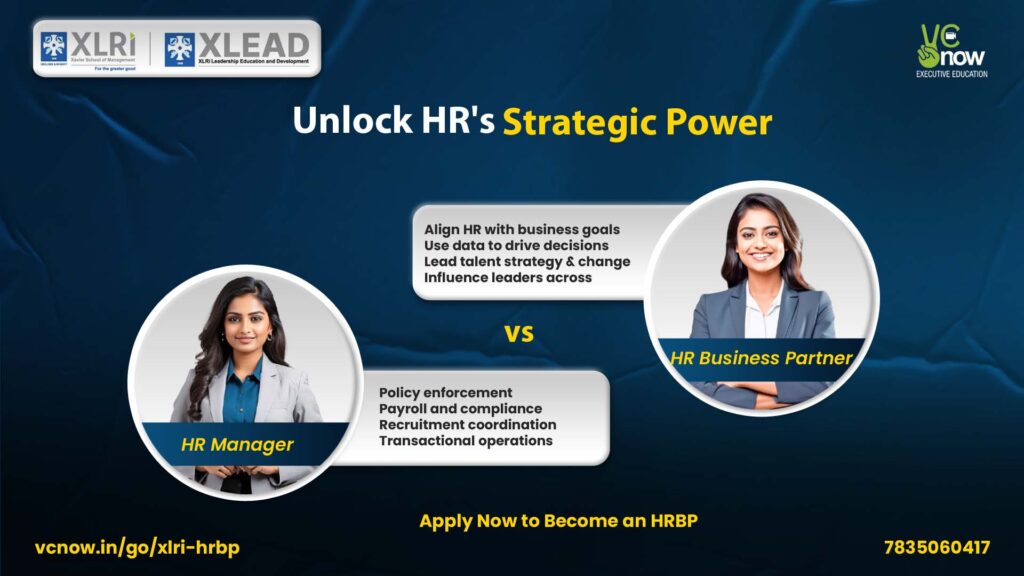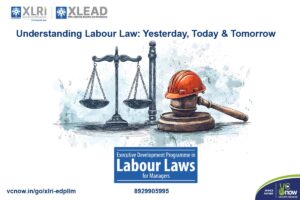
The Human Resources landscape is constantly evolving. For professionals seeking to advance their careers, understanding the distinctions between an HR Manager and an HR Business Partner (HRBP) is crucial.
While both roles are vital, their strategic impact and daily functions differ significantly. This article will clarify the unique contributions of each, guiding you towards the path that aligns with your career aspirations.
The Traditional HR Manager Role
The HR Manager is typically responsible for the day-to-day operations of the HR department. This includes a broad range of administrative and tactical duties, ensuring compliance and smooth functioning within the organization.
Core Responsibilities of an HR Manager:
Operational Oversight: Managing recruitment, onboarding, payroll processing, benefits administration, and employee records.
Policy Implementation: Ensuring company policies are adhered to and updating them as necessary.
Employee Relations: Handling grievances, disciplinary actions, and mediating workplace disputes.
Compliance: Ensuring the organization meets all labour laws and regulations.
An HR Manager is essential for maintaining a stable and compliant workforce, acting as the backbone of HR operations.
The Strategic HR Business Partner (HRBP)
The HR Business Partner, in contrast, is a more strategic role, deeply embedded within the business units they support. They act as consultants to leadership, aligning HR initiatives with broader organizational goals. The XLRI’s HR Business Partnering Program is specifically designed to cultivate these strategic capabilities.
Key Contributions of an HRBP:
Strategic Alignment: Translating business strategy into HR initiatives, such as talent acquisition plans, retention strategies, and succession planning.
Consultative Approach: Advising senior leaders on human capital challenges, organizational design, and change management.
Data-Driven Decisions: Utilizing HR analytics to inform business decisions and measure the impact of HR interventions.
Talent Management: Developing and implementing strategies for talent development, performance management, and workforce planning.
An HRBP moves beyond transactional HR, becoming a critical driver of business success through human capital strategies. This is precisely the focus of an XLRI Strategic HR Course.
From Tactics to Transformation: Defining the Difference between HR Manager and HRBP
For Human Resources professionals, understanding the distinction between an HR Manager and an HR Business Partner (HRBP) is essential for career growth.
An HR Manager typically focuses on tactical and operational excellence: managing compliance, payroll, employee services, and day-to-day administration. This function ensures the organization runs smoothly.
Conversely, the HRBP embraces a truly strategic mandate, acting as an internal consultant who drives business outcomes through human capital. They interpret business strategy and translate it into actionable people-centric initiatives.
| Key Areas | HR Manager | HR Business Partner (HRBP) |
|---|---|---|
| Focus | Tactical/Operational | Strategic/Consultative |
| Responsibilities | Payroll, compliance, daily operations | Align HR with business goals, analytics |
| Stakeholders | Employees, line managers | Senior leadership, business units |
| Decision Impact | Policy implementation | Influence business strategy |
| Career Path | Operational excellence | Strategic leadership, C-suite access |
Why the Distinction Matters for Your Career
Understanding this difference is pivotal for your career trajectory. If your passion lies in operational excellence and direct employee support, an HR Manager role might be ideal. However, if you aspire to influence business strategy, drive organizational change, and sit at the leadership table, the HRBP role offers that strategic leverage.
Many HR professionals aiming for this strategic shift seek specialized training. Programs like the XLRI HRBP Program provide the advanced knowledge in areas like strategic talent management, organizational effectiveness, and change leadership that are critical for an HRBP.
This kind of XLRI Strategic HR Course equips individuals with the analytical and consulting skills needed to transition from an administrative HR role to a strategic business partner.
Mastering Strategic Influence: The HRBP Mandate
The HRBP role requires advanced competence in organizational design and change leadership. If you aim to lead transformation, a comprehensive education is necessary. The XLRI HRBP Program is designed precisely for this purpose.
How the XLRI HR Business Partnering (HRBP) Program Elevates HR Careers
This XLRI Strategic HR Business Partnering Course equips professionals to transition from administrative HR to a high-impact, strategic partner. It helps HR professionals by integrating core business concepts with HR delivery.
The curriculum covers modules vital for the modern HR professional:
- HR Business Partner Model and Role Clarity: Defines the consultative position within the business unit.
- Designing an HR Strategy Aligned to Business Strategy: Teaches me how to tie workforce plans directly to corporate goals.
- Analytics in HR: Using HR Data for Decision Making: Focuses on leveraging data, not just intuition, to prove HR’s value and impact.
- Leading Change and Transformation: Provides the crucial skills for navigating organizational shifts and restructuring.
- Strategic Talent Acquisition and Management: Moves beyond basic hiring to focus on forecasting future talent needs.
By mastering these competencies through an XLRI Strategic HR Course, an HR professional gains the E.A.T. (Expertise, Authoritativeness, Trustworthiness) needed to sit at the executive table, driving strategic decisions and contributing directly to the bottom line.
This focus ensures practitioners move beyond transactional tasks to strategic impact, positioning them as true business leaders. To explore the full curriculum and transition into this high-value role, click here: XLRI Executive Development Programme in HR Business Partnering.
Conclusion
In conclusion, while both HR Managers and HRBPs are indispensable, the HRBP represents a higher level of strategic engagement, directly linking HR functions to the organization’s overarching business objectives. For those looking to make a significant impact on business performance through human capital, the HRBP path is a powerful choice.
FAQs

What is the main difference between an HR Manager and an HRBP?
The main difference is strategic focus. An HR Manager is operational and tactical, focusing on daily compliance and administration. An HRBP (Business Partner) is strategic and consultative, aligning people strategy directly with core business objectives.

Is the HRBP role considered a step up from the HR Manager role?
Yes, the HRBP role is generally considered a more senior and strategic progression. It requires a broader understanding of business finance, operations, and market dynamics to act as a consultant to senior leadership.

What specific skills does an HRBP need that an HR Manager might not?
An HRBP requires strong skills in strategic alignment, HR analytics, organizational design, and change leadership. An HR Manager’s core skills are typically in compliance, policy enforcement, and employee relations.

How does the XLRI HRBP Programme help me transition my career?
The XLRI HRBP Programme (or XLRI Strategic HR Course) provides the advanced, structured knowledge required for the transition. Modules cover strategic talent management, HR analytics for decision-making, and leading organizational change, equipping you with the consultative skills to move from a transactional to a strategic role.

What does the daily work responsibility of an HRBP comprise of?
An HRBP spends their time advising leaders on human capital challenges, developing retention and succession plans, measuring the impact of HR programs using data, and leading strategic initiatives like organizational restructuring, rather than managing payroll or compliance paperwork.








